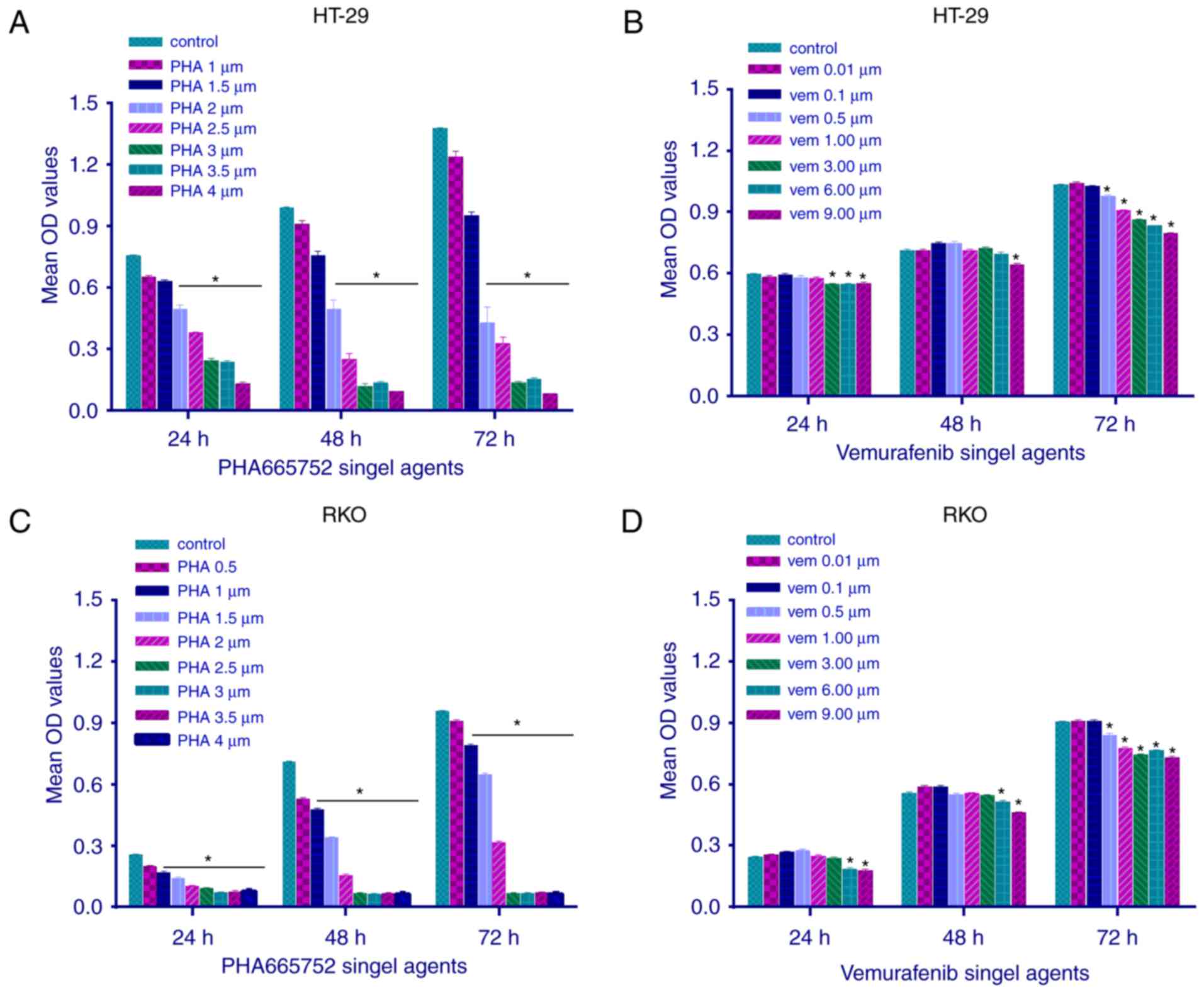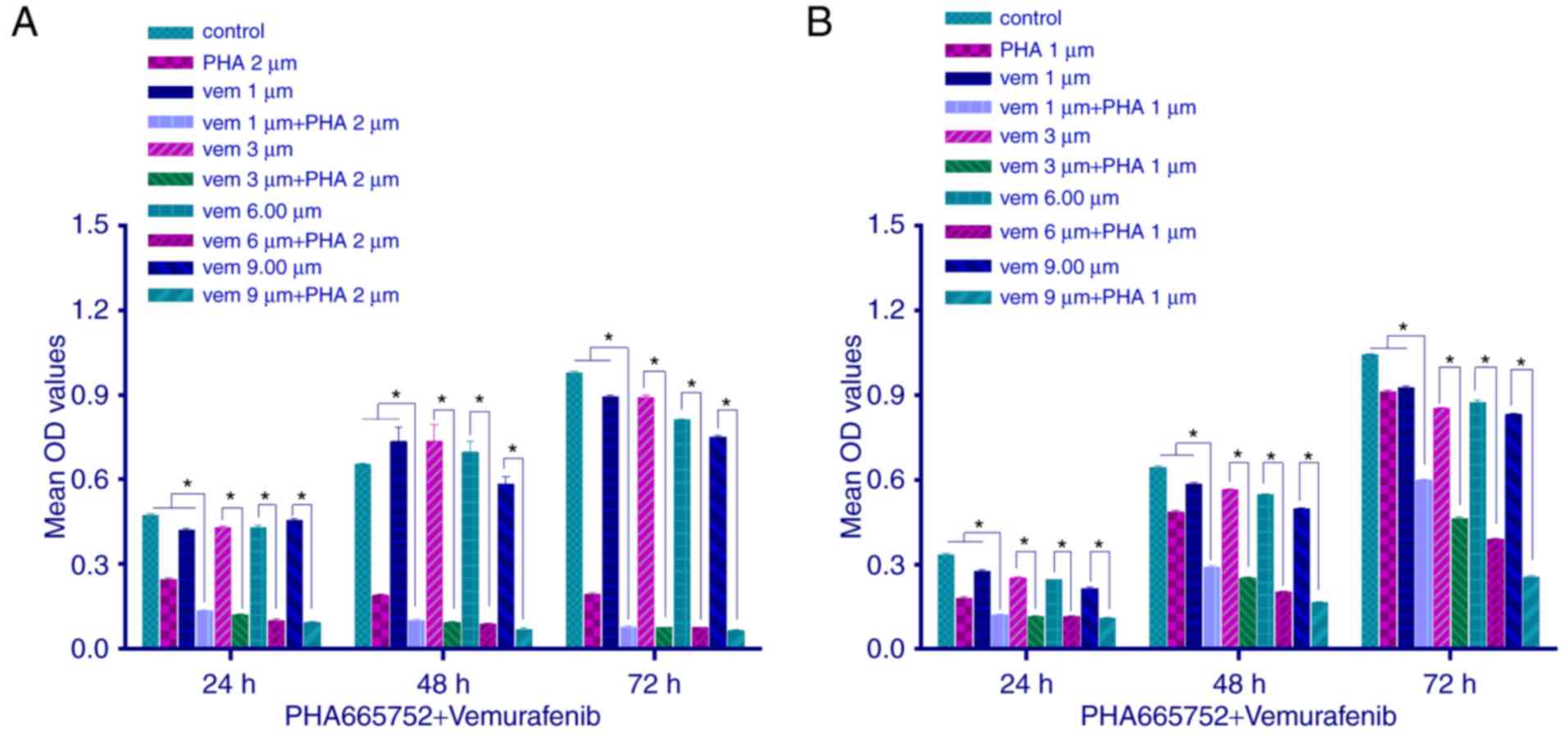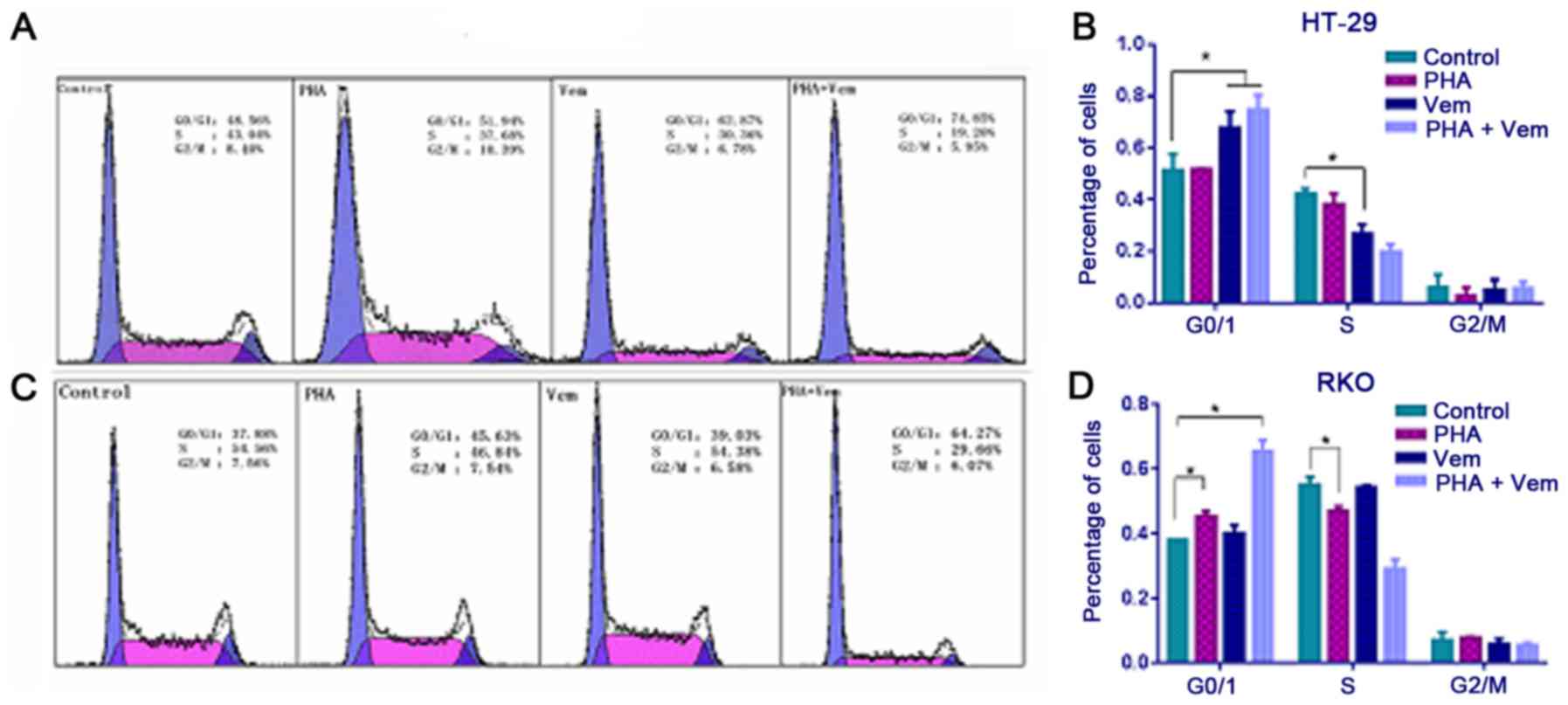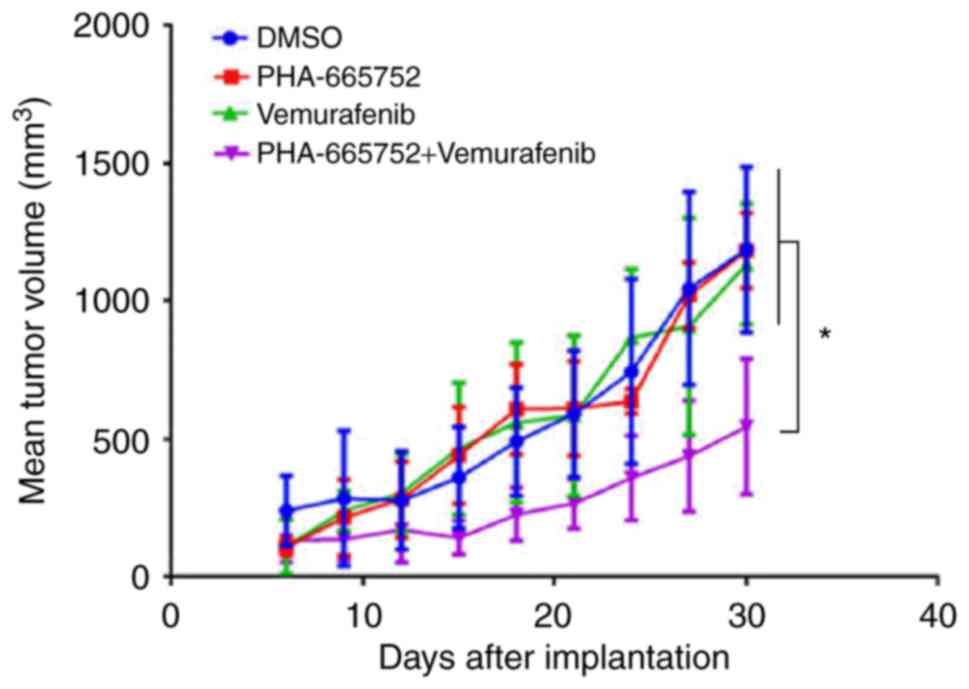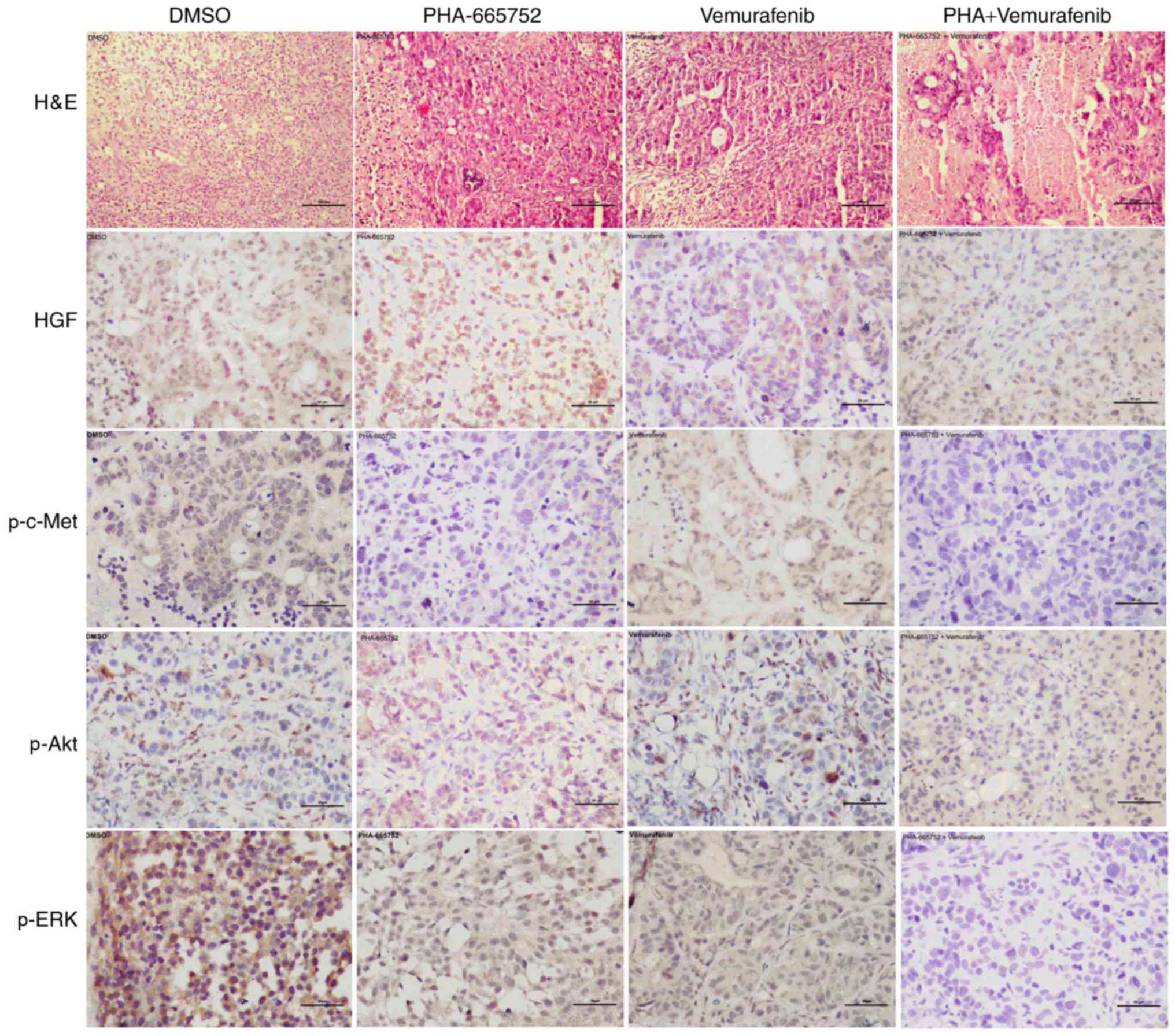|
1
|
Siegel RL, Miller KD and Jemal A: Cancer
statistics, 2015. CA Cancer J Clin. 65:5–29. 2015. View Article : Google Scholar : PubMed/NCBI
|
|
2
|
Lin PC, Yang YF, Tyan YC, Hsiao ES, Chu
PC, Lee CT, Lee JC, Chen YM and Liao PC: Identification of
Phosphorylated Cyclin-Dependent Kinase 1 Associated with Colorectal
Cancer Survival Using Label-Free Quantitative Analyses. PLoS One.
11:e01588442016. View Article : Google Scholar : PubMed/NCBI
|
|
3
|
Clarke CN and Kopetz ES: BRAF mutant
colorectal cancer as a distinct subset of colorectal cancer:
Clinical characteristics, clinical behavior, and response to
targeted therapies. J Gastrointest Oncol. 6:660–667.
2015.PubMed/NCBI
|
|
4
|
Chapman PB, Hauschild A, Robert C, Haanen
JB, Ascierto P, Larkin J, Dummer R, Garbe C, Testori A, Maio M, et
al: Improved survival with vemurafenib in melanoma with BRAF V600E
mutation. N Engl J Med. 364:2507–2516. 2011. View Article : Google Scholar : PubMed/NCBI
|
|
5
|
Cohen R, Cervera P, Svrcek M, Pellat A,
Dreyer C, de Gramont A and André T: BRAF-mutated colorectal cancer:
What is the optimal strategy for treatment. Curr Treat Options
Oncol. 18:92017. View Article : Google Scholar : PubMed/NCBI
|
|
6
|
Byeon HK, Na HJ, Yang YJ, Ko S, Yoon SO,
Ku M, Yang J, Kim JW, Ban MJ, Kim JH, et al: Acquired resistance to
BRAF inhibition induces epithelial-to-mesenchymal transition in
BRAF (V600E) mutant thyroid cancer by c-Met-mediated AKT
activation. Oncotarget. 8:596–609. 2017. View Article : Google Scholar : PubMed/NCBI
|
|
7
|
Filitis DC, Rauh J and Mahalingam M: The
HGF-cMET signaling pathway in conferring stromal-induced
BRAF-inhibitor resistance in melanoma. Melanoma Res. 25:470–478.
2015. View Article : Google Scholar : PubMed/NCBI
|
|
8
|
Gnad F, Doll S, Song K, Stokes MP, Moffat
J, Liu B, Arnott D, Wallin J, Friedman LS, Hatzivassiliou G and
Belvin M: Phosphoproteome analysis of the MAPK pathway reveals
previously undetected feedback mechanisms. Proteomics.
16:1998–2004. 2016. View Article : Google Scholar : PubMed/NCBI
|
|
9
|
Barresi V, Bonetti LR and Bettelli S:
KRAS, NRAS, BRAF mutations and high counts of poorly differentiated
clusters of neoplastic cells in colorectal cancer: Observational
analysis of 175 cases. Pathology. 47:551–556. 2015. View Article : Google Scholar : PubMed/NCBI
|
|
10
|
Gao J, Sun ZW, Li YY and Shen L: Mutations
of KRAS and BRAF in Chinese patients with colorectal carcinoma:
Analyses of 966 cases. Zhonghua Bing Li Xue Za Zhi. 41:579–583.
2012.(In Chinese). PubMed/NCBI
|
|
11
|
Jang S, Hong M, Shin MK, Kim BC, Shin HS,
Yu E, Hong SM, Kim J, Chun SM, Kim TI, et al: KRAS and PIK3CA
mutations in colorectal adenocarcinomas correlate with aggressive
histological features and behavior. Hum Pathol. 65:21–30. 2017.
View Article : Google Scholar : PubMed/NCBI
|
|
12
|
Chen CT, Kim H, Liska D, Gao S,
Christensen JG and Weiser MR: MET activation mediates resistance to
lapatinib inhibition of HER2-amplified gastric cancer cells. Mol
Cancer Ther. 11:660–669. 2012. View Article : Google Scholar : PubMed/NCBI
|
|
13
|
Joshi M, Rice SJ, Liu X, Miller B and
Belani CP: Trametinib with or without vemurafenib in BRAF mutated
non-small cell lung cancer. PLoS One. 10:e01182102015. View Article : Google Scholar : PubMed/NCBI
|
|
14
|
Sikkandhar MG, Nedumaran AM, Ravichandar
R, Singh S, Santhakumar I, Goh ZC, Mishra S, Archunan G, Gulyás B
and Padmanabhan P: Theranostic probes for targeting tumor
microenvironment: An overview. Int J Mol Sci. 18:pii: E10362017.
View Article : Google Scholar
|
|
15
|
Munn DH, Sharma MD, Johnson TS and
Rodriguez P: IDO, PTEN-expressing Tregs and control of
antigen-presentation in the murine tumor microenvironment. Cancer
Immunol Immunother. 66:1049–1058. 2017. View Article : Google Scholar : PubMed/NCBI
|
|
16
|
Casey SC, Amedei A, Aquilano K, Azmi AS,
Benencia F, Bhakta D, Bilsland AE, Boosani CS, Chen S, Ciriolo MR,
et al: Cancer prevention and therapy through the modulation of the
tumor microenvironment. Semin Cancer Biol. 35 Suppl:S199–S223.
2015. View Article : Google Scholar : PubMed/NCBI
|
|
17
|
Whitfield JR and Soucek L: Tumo r
microenvironment: Becoming sick of Myc. Cell Mol Life Sci.
69:931–934. 2012. View Article : Google Scholar : PubMed/NCBI
|
|
18
|
Rakhra K, Bachireddy P, Zabuawala T,
Zeiser R, Xu L, Kopelman A, Fan AC, Yang Q, Braunstein L, Crosby E,
et al: CD4(+) T cells contribute to the remodeling of the
microenvironment required for sustained tumor regression upon
oncogene inactivation. Cancer Cell. 18:485–498. 2010. View Article : Google Scholar : PubMed/NCBI
|
|
19
|
Kenny PA, Lee GY and Bissell MJ: Targeting
the tumor microenvironment. Front Biosci. 12:3468–3474. 2007.
View Article : Google Scholar : PubMed/NCBI
|
|
20
|
Kuo YH, Chiang EI, Chao CY, Rodriguez RL,
Chou PY, Tsai SY, Pai MH and Tang FY: Dual inhibition of key
proliferation signaling pathways in triple-negative breast cancer
cells by a novel derivative of taiwanin A. Mol Cancer Ther.
16:480–493. 2017. View Article : Google Scholar : PubMed/NCBI
|
|
21
|
Mann KM, Ying H, Juan J, Jenkins NA and
Copeland NG: KRAS-related proteins in pancreatic cancer. Pharmacol
Ther. 168:29–42. 2016. View Article : Google Scholar : PubMed/NCBI
|
|
22
|
Bresin A, D'Abundo L, Narducci MG,
Fiorenza MT, Croce CM, Negrini M and Russo G: TCL1 transgenic mouse
model as a tool for the study of therapeutic targets and
microenvironment in human B-cell chronic lymphocytic leukemia. Cell
Death Dis. 7:e20712016. View Article : Google Scholar : PubMed/NCBI
|
|
23
|
Krpina K, Babarović E, Španjol J, Đorđević
G, Maurer T and Jonjić N: Correlation of tumor-associated
macrophages and NK cells with bladder cancer size and T stage in
patients with solitary low-grade urothelial carcinoma. Wien Klin
Wochenschr. 128:248–252. 2016. View Article : Google Scholar : PubMed/NCBI
|
|
24
|
Ocana A, Vera-Badillo F, Al-Mubarak M,
Templeton AJ, Corrales-Sanchez V, Diez-Gonzalez L, Cuenca-Lopez MD,
Seruga B, Pandiella A and Amir E: Activation of the PI3K/mTOR/AKT
pathway and survival in solid tumors: Systematic review and
meta-analysis. PLoS One. 9:e952192014. View Article : Google Scholar : PubMed/NCBI
|
|
25
|
Baba Y, Tamura T, Satoh Y, Gotou M, Sawada
H, Ebara S, Shibuya K, Soeda J and Nakamura K: Panitumumab
interaction with TAS-102 leads to combinational anticancer effects
via blocking of EGFR-mediated tumor response to trifluridine. Mol
Oncol. 11:1065–1077. 2017. View Article : Google Scholar : PubMed/NCBI
|
|
26
|
Liu L, Liao JZ, He XX and Li PY: The role
of autophagy in hepatocellular carcinoma: Friend or foe.
Oncotarget. 8:57707–57722. 2017.PubMed/NCBI
|
|
27
|
Wang X, Shi W, Shi H, Lu S, Wang K, Sun C,
He J, Jin W, Lv X, Zou H and Shu Y: TRIM11 overexpression promotes
proliferation, migration and invasion of lung cancer cells. J Exp
Clin Cancer Res. 35:1002016. View Article : Google Scholar : PubMed/NCBI
|
|
28
|
He K, Chen D, Ruan H, Li X, Tong J, Xu X,
Zhang L and Yu J: BRAFV600E-dependent Mcl-1 stabilization leads to
everolimus resistance in colon cancer cells. Oncotarget.
7:47699–47710. 2016.PubMed/NCBI
|



